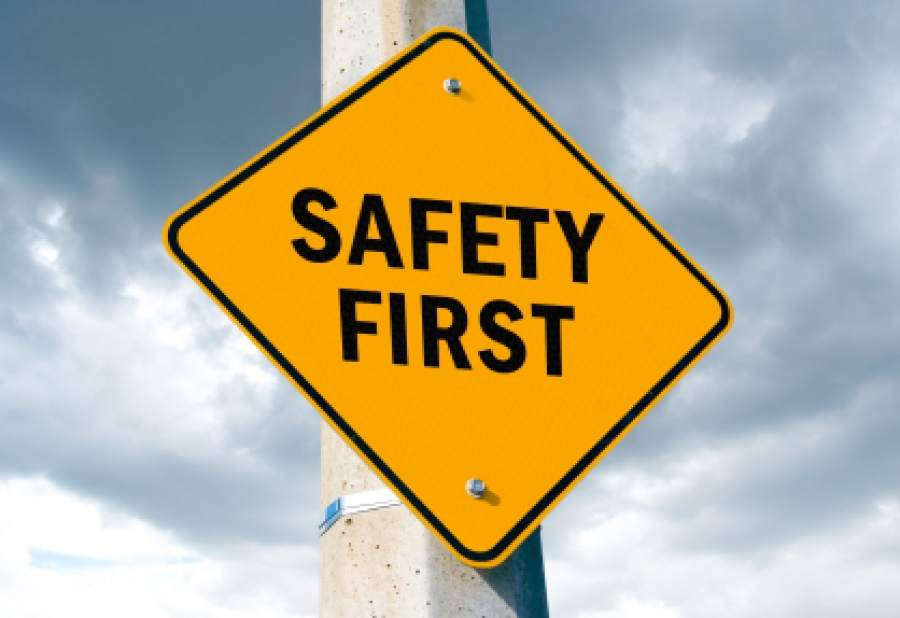No house is perfect and it takes a lot of maintenance over time to keep a house in top shape for decades. Neglect, poor hygiene or just simple underestimation of potential problems can lead the slow deterioration of a home, and that is when an unsafe living environment is formed. Sometimes, it is just the little things that go unnoticed for months and even years that can end up causing you the worst problems, both in terms of your family’s health and finances. There are some very common health hazards lurking in every house, and before we can successfully address them, we need to understand what they are and what causes them. After all, it is important to get to the root of the problem, not to merely fix the damage done.
Poor air quality and poisonous gas
 You may notice this problem after moving into a new home, after renovations or during the long winter months. The air in your home may feel stale and you may experience coughing or heavy breathing that suddenly stops when you leave the house. Feeling sleepy and not feeling rested after a long sleep are also good signs that something is wrong. In general, if you are experiencing any unusual symptoms when you are at home, but not when you are outside, this is a good indicator that you will have problems with air quality.
You may notice this problem after moving into a new home, after renovations or during the long winter months. The air in your home may feel stale and you may experience coughing or heavy breathing that suddenly stops when you leave the house. Feeling sleepy and not feeling rested after a long sleep are also good signs that something is wrong. In general, if you are experiencing any unusual symptoms when you are at home, but not when you are outside, this is a good indicator that you will have problems with air quality.
The problem is usually related to carbon monoxide, which is colorless and odorless gas and it may be a result of gas leaks. It becomes apparent if the home isn’t being ventilated well enough, e.g. during the heating season in the winter when all windows and doors are shut tight. Exposure to smoke from fireplaces and Freon gas found in refrigerators are quite common as well. A smoke detector and CO alarm are a great early warning. It is recommended to contact professionals to have the house inspected.
Toxic materials
There are a lot of toxic materials that can make their way into your home environment. The biggest culprits are asbestos, which cause lung cancer and were widely used for insulation in the past, and radon gas, a product of radium decay. Radium is commonly found in rock and soil and the radon gas produced by its decay can easily linger in crawlspaces and basements. Testing for radon is fairly inexpensive, however if your house is built on a problem area, it may cost you upwards of $1000 to install an effective mitigation system.
Other common toxic materials are those found in potent household cleaning products – poor ventilation combined with the overuse of such chemicals can lead to inhalation – as well as formaldehyde, a toxic compound that can be released from adhesives used in certain types of wood flooring (particularly bamboo floors), so be careful when choosing hardwood or laminate floors. Watch out for ceramic tiles coming out of China, as the Chinese are notorious for using lead paint on some of their products.
Poor quality drinking water
 It’s no wonder that so many people are filling their fridges with bottled water these days – the regular tap water we get in our homes is often of poor quality and may contain all sorts of germs and contaminants. Even if you drink only bottled water, you still use tap water to wash the dishes, wash fruit and vegetables and the food you cook, shower, clean your face and brush your teeth. Poor quality water can cause numerous health problems and weaken your immune system, and even with clean tap water, you risk getting certain chemicals into your body – e.g. chlorine. A good solution is to have a water purification system installed. These aren't that expensive and will provide you with very clean drinking water for years to come.
It’s no wonder that so many people are filling their fridges with bottled water these days – the regular tap water we get in our homes is often of poor quality and may contain all sorts of germs and contaminants. Even if you drink only bottled water, you still use tap water to wash the dishes, wash fruit and vegetables and the food you cook, shower, clean your face and brush your teeth. Poor quality water can cause numerous health problems and weaken your immune system, and even with clean tap water, you risk getting certain chemicals into your body – e.g. chlorine. A good solution is to have a water purification system installed. These aren't that expensive and will provide you with very clean drinking water for years to come.
Mold
Mold is a major concern, particularly in humid climates. They fall under the category of fungi, along with mildew, and can grow virtually anywhere in the house if you are not careful. Big fluffy rugs can easily catch mold spores, but they can take hold of walls, particularly in damp corners, basements, etc. Mold can cause allergic reactions and some types can even produce toxins, so it is best to deal with it as soon as you become aware of the problem. You can test for mold and have it removed, but you will need to deal with the source of moisture if you want long-term results. Water and humidity are required for mold to grow, so be sure to keep these in check.
Be sure to check your home for these common health hazards even if nothing seems out of the ordinary – it is best to catch the problem early on and fix it before any real damage has been done. Improving the quality of your life and protecting your health warrants a bit of time and effort spent on preventive measures.








